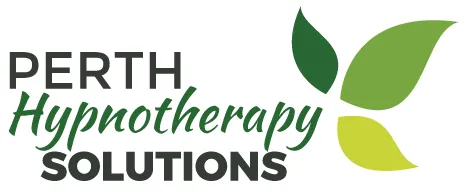
Trauma and Post-Traumatic Stress Disorder (PTSD) are complex and debilitating conditions that arise from experiencing or witnessing life-threatening events. They can leave lasting scars on an individual’s mental and emotional well-being, often resulting in flashbacks, severe anxiety, and a persistent sense of danger. Traditional treatments like talk therapy and medication have been the mainstays of addressing these issues, but integrative therapies such as Neuro-Linguistic Programming (NLP) and Hypnosis offer groundbreaking alternatives that can significantly enhance the healing process., decreasing anxiety and stress related to these isues.
The Potential of NLP and Hypnosis
NLP and Hypnosis provide unique opportunities to address the deep-rooted effects of trauma and PTSD by tapping into the subconscious mind, where much of the trauma is stored. These therapies can help rewire the brain’s response to traumatic memories and foster resilience, ultimately empowering individuals to regain control over their lives.
New and Fresh Ideas for Using NLP and Hypnosis to Overcome Trauma
1. Creating a Safe Mental Space
Trauma often leaves individuals feeling unsafe in their own minds. Using Hypnosis, clients can be guided to create a mental sanctuary—a place of absolute safety and calm. This mental space can be a serene beach, a lush forest, or any environment that evokes peace and security. By repeatedly visiting this mental sanctuary during hypnosis sessions, clients can build a robust mental refuge that they can access during moments of distress.
2. Rewriting the Trauma Narrative
NLP can help individuals reframe their trauma narratives. Instead of viewing themselves as victims, clients can be guided to see their survival as a testament to their strength and resilience. This shift in perspective can be reinforced through hypnosis by embedding positive affirmations and empowering beliefs into the subconscious. Over time, this new narrative can replace the old, damaging story, helping individuals to see themselves not as broken but as resilient survivors.
3. Future Pacing for Empowerment
Future pacing is an NLP technique that involves imagining a positive future scenario. When combined with Hypnosis, this approach can be incredibly powerful. Clients can be guided to visualize themselves successfully navigating situations that previously triggered their PTSD symptoms. This forward-looking visualization helps create a mental blueprint for success and reduces fear and anxiety about the future. It also strengthens the client’s belief in their ability to overcome challenges.
4. Healing the Inner Child
Many traumatic experiences are rooted in childhood. NLP and Hypnosis can be used to facilitate inner child healing. Clients can be guided to reconnect with their younger selves in a state of deep relaxation. They can offer comfort, understanding, and support to their inner child, effectively re-parenting themselves and addressing the unmet emotional needs that contribute to their trauma. This process fosters self-compassion and helps heal deep-seated wounds.
5. Anchoring Resilience and Strength
While specific NLP anchoring techniques are well-known, combining this concept with Hypnosis can yield innovative results. During hypnosis sessions, clients can be guided to recall moments of strength and resilience, deeply embedding these feelings into their subconscious. By creating mental anchors linked to these positive emotions, clients can access them during difficult times, providing a reliable source of inner strength.
6. Developing a Personal Empowerment Ritual
Rituals have a powerful effect on the human psyche. Clients can be encouraged to develop a personal empowerment ritual that incorporates elements of NLP and Hypnosis. This might involve a daily practice of self-hypnosis combined with positive affirmations and visualizations. By dedicating time each day to this ritual, individuals can reinforce their progress and maintain a strong sense of control and empowerment.
7. Integrating Somatic Healing
Trauma is not just a mental phenomenon; it also manifests in the body. NLP and Hypnosis can be integrated with somatic healing practices to address the physical aspects of trauma. Hypnosis can help clients become more attuned to their bodily sensations and release stored tension. NLP can guide them to reinterpret these sensations in a less threatening manner. This holistic approach ensures that both the mind and body are engaged in the healing process.
8. Creating a Trauma-Resilient Identity
Identity plays a crucial role in how individuals perceive and respond to trauma. Through NLP, clients can be guided to construct a trauma-resilient identity—seeing themselves as individuals who are capable of overcoming adversity. Hypnosis can be used to reinforce this identity by embedding it deeply into the subconscious. This newly forged identity can serve as a powerful shield against future trauma triggers.
The innovative use of NLP and Hypnosis in treating trauma and PTSD offers a transformative approach that goes beyond traditional methods. By creating safe mental spaces, rewriting trauma narratives, future pacing, healing the inner child, anchoring resilience, developing personal rituals, integrating somatic healing, and fostering a trauma-resilient identity, individuals can experience profound healing and empowerment. These integrative therapies provide a path to not just manage but truly overcome trauma, allowing individuals to reclaim their lives with newfound strength and resilience. Give Beverley a call and find out how you can move through the debilitating trauma and start to live the life you desire.
